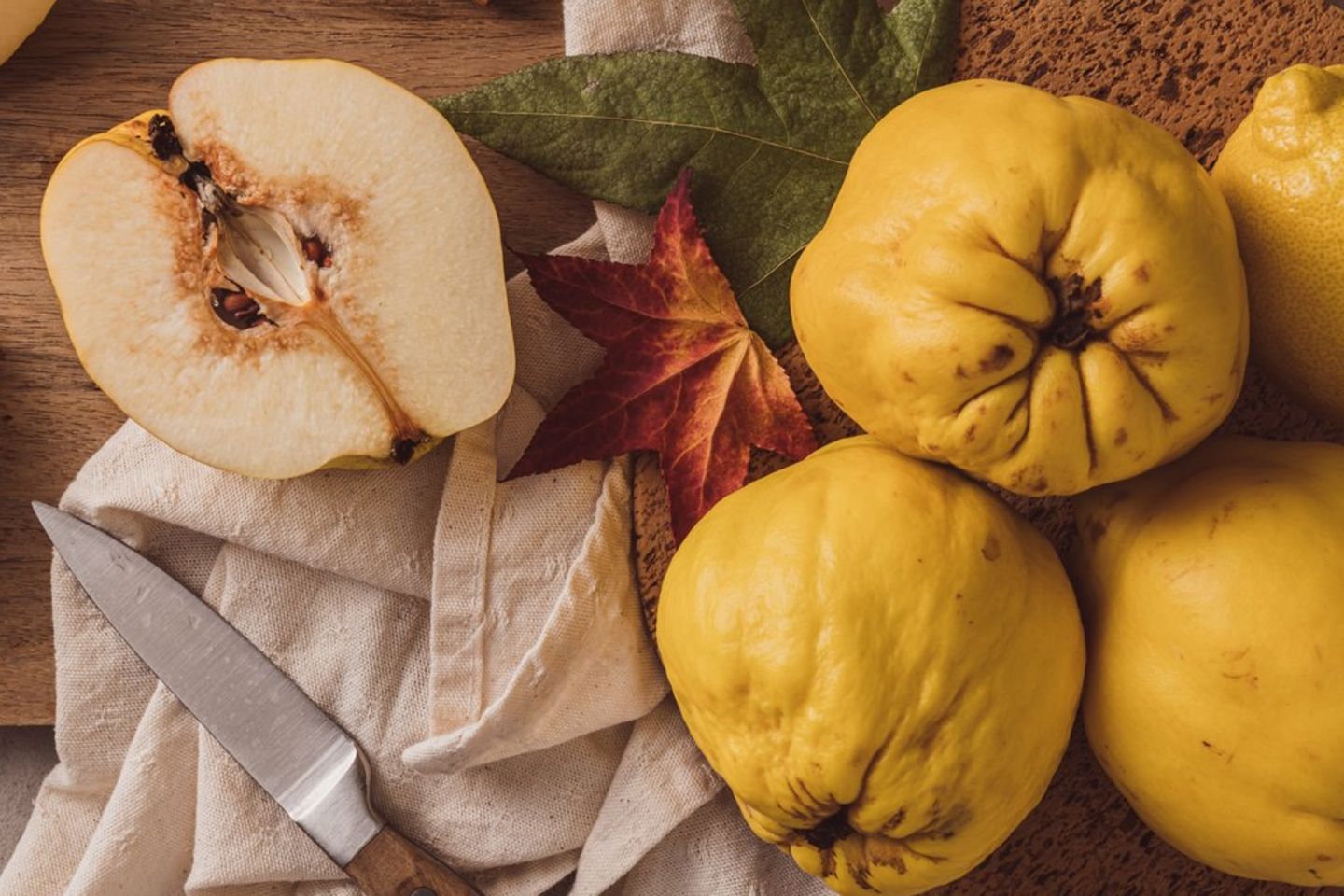Quinces
All information about seasonal fruit
In terms of appearance and taste, quinces are somewhere between apple and pear.
© AnaMarques/Shutterstock.com
Quinces are in season in autumn and can be prepared in a variety of ways – this is what you need to know about the seasonal fruit.
Quinces are probably the oldest fruit crop in Germany – however, they do not enjoy a good reputation. The stone fruit is in season in October and November and is somewhere between apple and pear in terms of appearance and taste. However, when raw, their flesh is hard and the taste is bitter. However, quinces taste great when made into jam, liqueur or juice. What do you need to know about stone fruit?
Apple quince vs. pear quince
Basically, quinces can be divided into two groups of varieties: apple quince and pear quince. The name comes from the shape of the fruits. While the apple quince has a very hard and tart aroma, the pear quince is easier to process due to its softer pulp and has a milder taste. Not only in name but also botanically, the rose family is closely related to apples and pears. Only a few varieties are edible raw. What is characteristic of quinces is the felty fluff that covers the peel.
Quinces have their origins in the Caucasus – they were cultivated there over 6,000 years ago. The Greeks also liked the fruit and first cultivated quinces around 600 BC. BC. But it was the Romans who first brought the “wool apple,” as they called it, to Northern Europe. Today most of the growing areas are in Europe and Asia.
Quince: This yellow fruit is so healthy
The fruit was already known for its healthy effects in ancient times. In addition to lots of vitamin C, quinces are rich in minerals such as potassium, sodium, zinc, iron and copper. They also contain fiber and mucilage, which have a positive effect on digestion. The mucilage also has an anti-inflammatory effect. They are also true figure flatterers: Quinces consist of more than 80 percent water and have just 40 kilocalories per 100 grams. In comparison, an apple has around 52 kilocalories.
When the quince is ripe
The main harvest time for quince is in October. When the fruit is ripe, the color changes from green to a bright golden yellow. The fuzz has also disappeared in fully ripe fruits and the peel is smooth. They also have an intense scent. Another indication of ripeness: If the seeds inside are dark in color, the quince is ready to harvest. The fruits should be picked before the first frost, as this can have a negative effect on the taste. Important to know: The fruit is hard even when ripe.
When harvesting, simply twist the quinces off the branch. Make sure that no pressure points occur. These areas are more susceptible to mold. If you pick unripe fruit, no problem – quinces ripen at room temperature. Very ripe quinces will last for about a week in the refrigerator.
Always store quinces alone
If you want to store the fruits, you should not harvest them too ripe. Also store quinces separately from other types of fruit as their strong aroma can be transferred. A temperature of zero to two degrees is ideal for storage. Quinces last up to two months. It is best to place them next to each other on newspaper in the dry cellar. Check the quinces again and again and sort out bad ones so that the mold doesn’t spread to the rest of the harvest.
Process quinces further
Most quince varieties are purely processed fruits. Their flesh is very hard and bitter when raw. If the quinces still have a slight fuzz, simply rub them down with a fine brush or a tea towel. Background: The fluff contains bitter substances and is therefore unsuitable for consumption. Also remove the seeds, as they contain a lot of hydrogen cyanide and are therefore poisonous. Jams, jellies, liqueurs and juices made from quince are popular. The so-called quince bread is also delicious, which is not bread but sweet confectionery.
